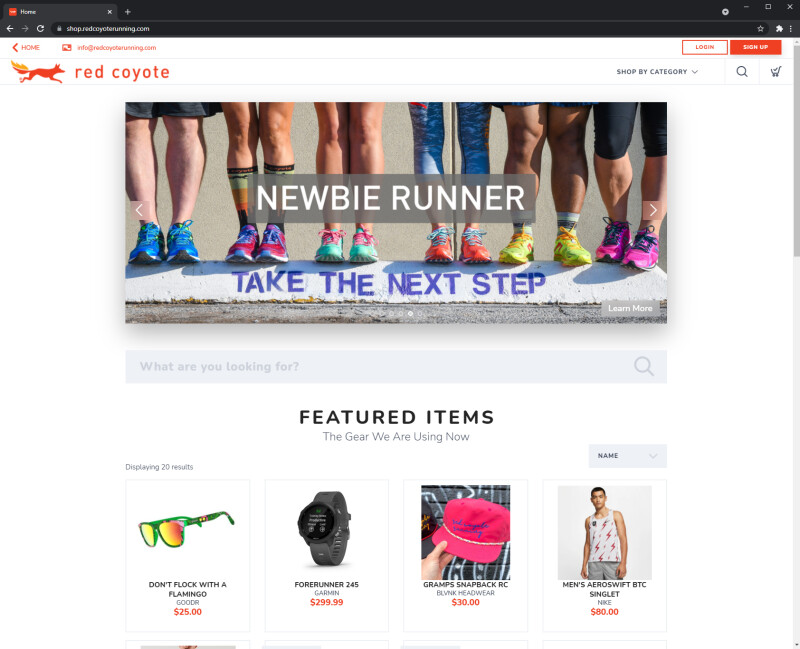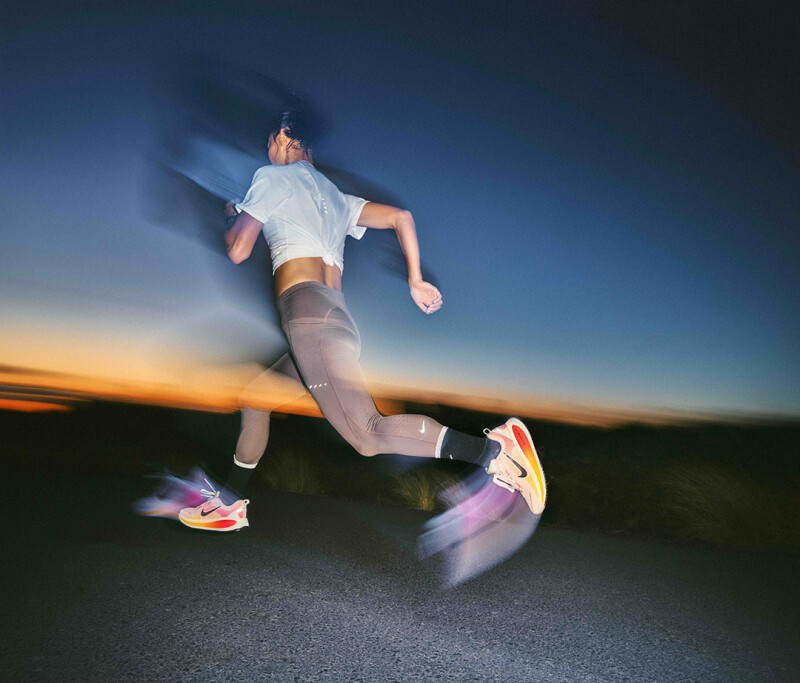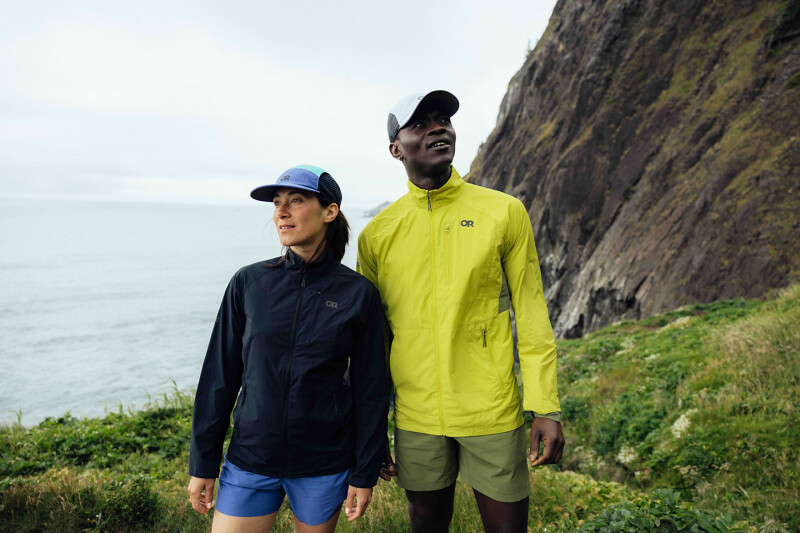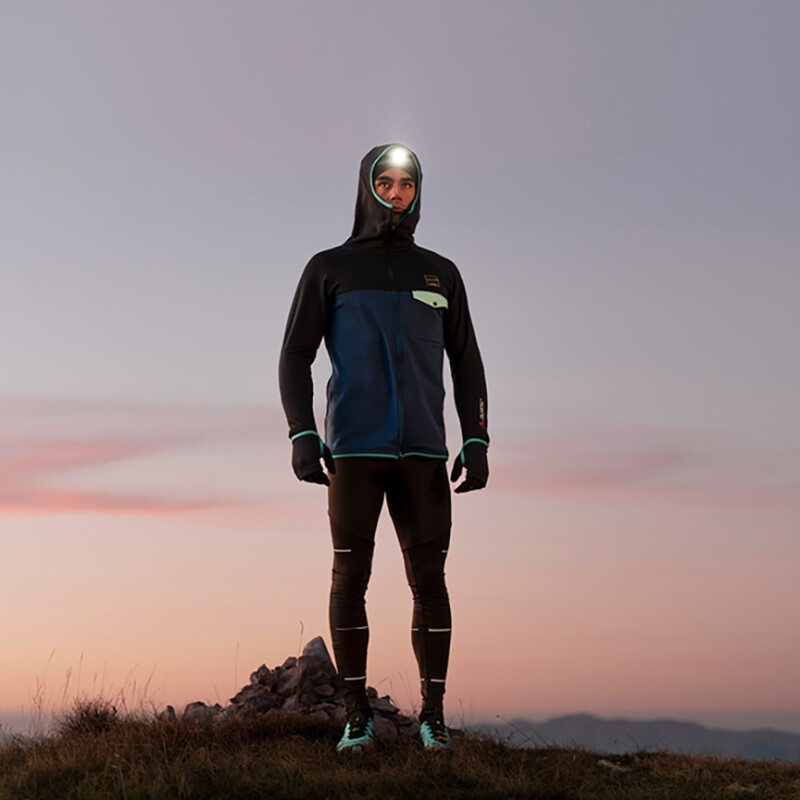The Elevator Pitch … The Run Free Project provides run specialty retailers with their own, custom-branded mobile app paired with a fully automated e-commerce and endless aisle solution that marries seamlessly to their point-of-sale system. Its member stores’ customers can use their app to track mileage with Garmin or Strava, read up on the latest shop news and product releases, sign up for and check into events, and shop, all while earning rewards. Meanwhile, its web-based platform makes it easy for stores to customize and manage all of it in one place, in real-time, while providing a complete view of customer behavior with insights to inform decision-making.
The Run Free Story … “We live and breathe by the same standards of excellence that the run specialty space is famous for,” says COO Rob Anderson. From apps to e-commerce, its platform’s development roadmap is driven by the ideas and feedback of retailers. “As the world adjusts to life on the tail end of a global pandemic, an infallible truth has become clear Ñ consumers are demanding a better virtual experience from the brands they love and they’ll go elsewhere if they can’t get it from a run specialty retailer.” The Run Free Project is engineering the future of run specialty by providing its members an easy to use and powerful platform to ensure their virtual presence is as stellar as their customers’ experience in-store
The Technology … Mobile apps and purpose-built software leveraging integrations that sync orders and inventory with complex point-of-sale systems are difficult and expensive to develop. With creative crowdsourcing, a little software development muscle and a lot of automation, Anderson and his team are able to offer a full suite of solutions for less than most stores are paying for e-commerce alone.
The Pandemic Impact … The pandemic accelerated adoption of technology in the run retail space that would have otherwise taken years. “In the old world, retailers might have dabbled in e-commerce, but it was unfamiliar territory and most put off taking the plunge until they couldn’t any longer,” Anderson says. “For many of our members, the pandemic unmoored any reluctance they had about tech adoption. It’s great to see. Not only has this experience been a gut check for everyone, but it’s also given us a glimpse into the future of customer engagement. The new normal will be defined by meeting demands for a healthy, active online presence from retailers that spans much more than just e-commerce and social media.”
What’s Next … Anderson points out that it’s pretty clear that e-commerce and omni have gone from nice-to-have to table stakes as a result of the pandemic. “Our decision to develop a deep, bi-directional integration with all the major point-of-sale systems wasn’t just because it’s a massive competitive differentiator, it was born from the idea that running stores don’t have the bandwidth to enter orders twice, search for product images online or manually adjust inventory in yet another piece of software,” he explains. “They need systems to do that for them so they can be out there selling product and engaging with the community in meaningful ways, so that’s what we built.
And After That … But that’s just the table stakes, Anderson continues, and he feels the real future of run specialty tech is so much more than just e-commerce. As an example, Run Free’s platform gives any mom-and-pop shop the ability to provide customers with a custom app experience on iOS or Android. This makes the stores easier to engage with, giving them an elegant way to present their customers with the opportunity to sign up for and check into their next 5K, or even to send a push notification after they’ve put 400 miles on their most recent pair of shoes. “End customers will expect their in-store and virtual experiences to mirror one another and we’re giving members a simple way to accomplish that without having a PhD in computer science or an overflowing bank account.”.
Advice for Retailers … “Anyone can learn anything and it’s never too late,” Anderson says. “Technology is no more complex than anything else in life, it just uses a lot more acronyms. Find a good resource to help you get a foothold, bounce some ideas off of a few friends, and you’ll be amazed at how quickly you learn and how easy it is to harness technology in new and super-cool ways. Just like training for a marathon, your knowledge and ability builds as you practice.”
The Future … “We’re an agile organization, which means we constantly innovate on a cycle, usually once every two weeks,” Anderson says. “Our platform is homegrown, standalone and purpose-built for run specialty, so we aren’t beholden to any other vendors or underlying products that might hinder our ability to innovate. I have a feeling you’ll be seeing a lot more interesting stuff coming out of The Run Free Project soon.”
THE RUN FREE PROJECT CASE HISTORY
Red Coyote Running Was An Early Adopter
Red Coyote Running and Fitness was founded to actively promote a healthy lifestyle in Oklahoma City and its surrounding communities. They strive to create an unprecedented retail experience by providing excellent customer care, offering unmatched product knowledge and building strong relationships within their community. They’re locally owned and operated by Burke and Jon Beck.
As power users, Red Coyote has been at the head of the line as early adopters of the Run Free Project’s innovations and their nationally-recognized, locally revered brand, backed by a strong digital mastery, has become the gold standard for success in a digital-friendly run specialty industry future.
“The team at Run Free is truly vested in our success,” says co-owner Jon Beck. “They’re always evolving and pushing the boundaries of what’s possible and they listen to our feedback. Their platform kept us operating during the pandemic and it’s now an integral part of the






